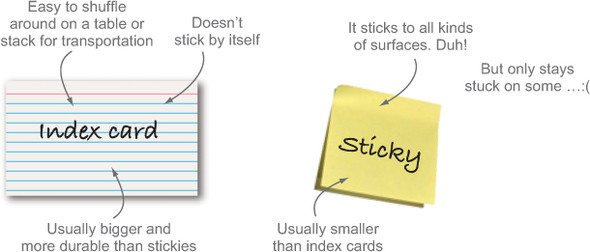This chapter covers
- Work-item cards
- Design principles for work-item cards
- What to keep on work-item cards and how to use this information to gain better knowledge about how your work works
Work in the software business is often not visible. Most of the work takes place in our heads or inside the computer. In order to get a better overview of who’s working on what and the status of the work, you visualize the work—thereby making information visible that previously wasn’t.
By far the most common way to track work items is to create a small card that represents the work that is being done. It can be an index card or a sticky note[1]: anything that is easy to work with and move around on a board, such as a white board. Cards on a board are a simple yet powerful way to see progress, bottlenecks, and queues happening in your workflow—and to make it in-your-face apparent to everyone what is happening.
1 For example, a Post-it® Note.
Using a physical card gives you some advantages over an electronic representation. A physical card can easily be annotated and customized with avatars, blockers, progress bars, tracking IDs, and other things that we’ll look into in this chapter. Also, because cards are tactile, they’re easy to use for collaboration, to move around, and even to take with you if needed.
